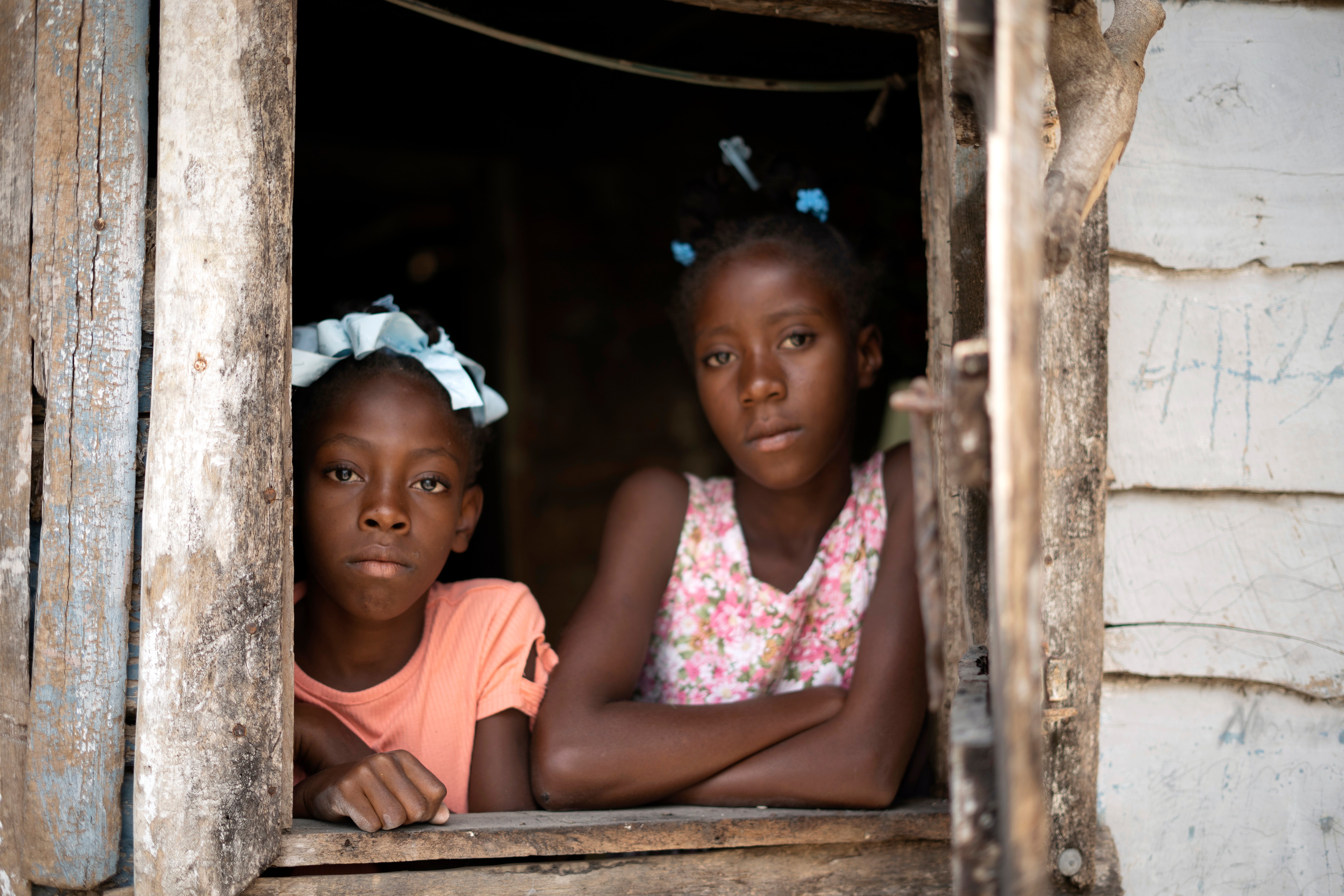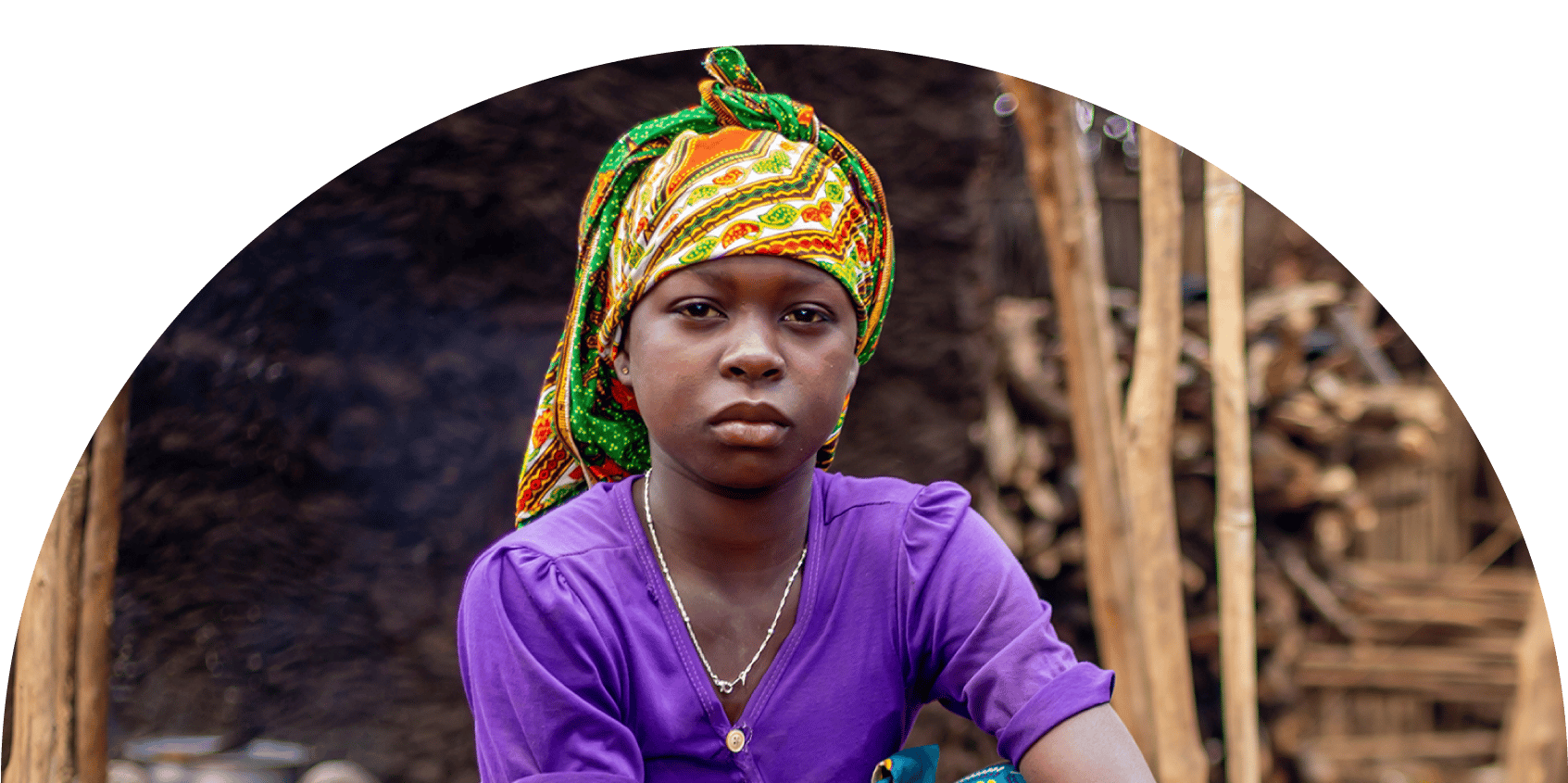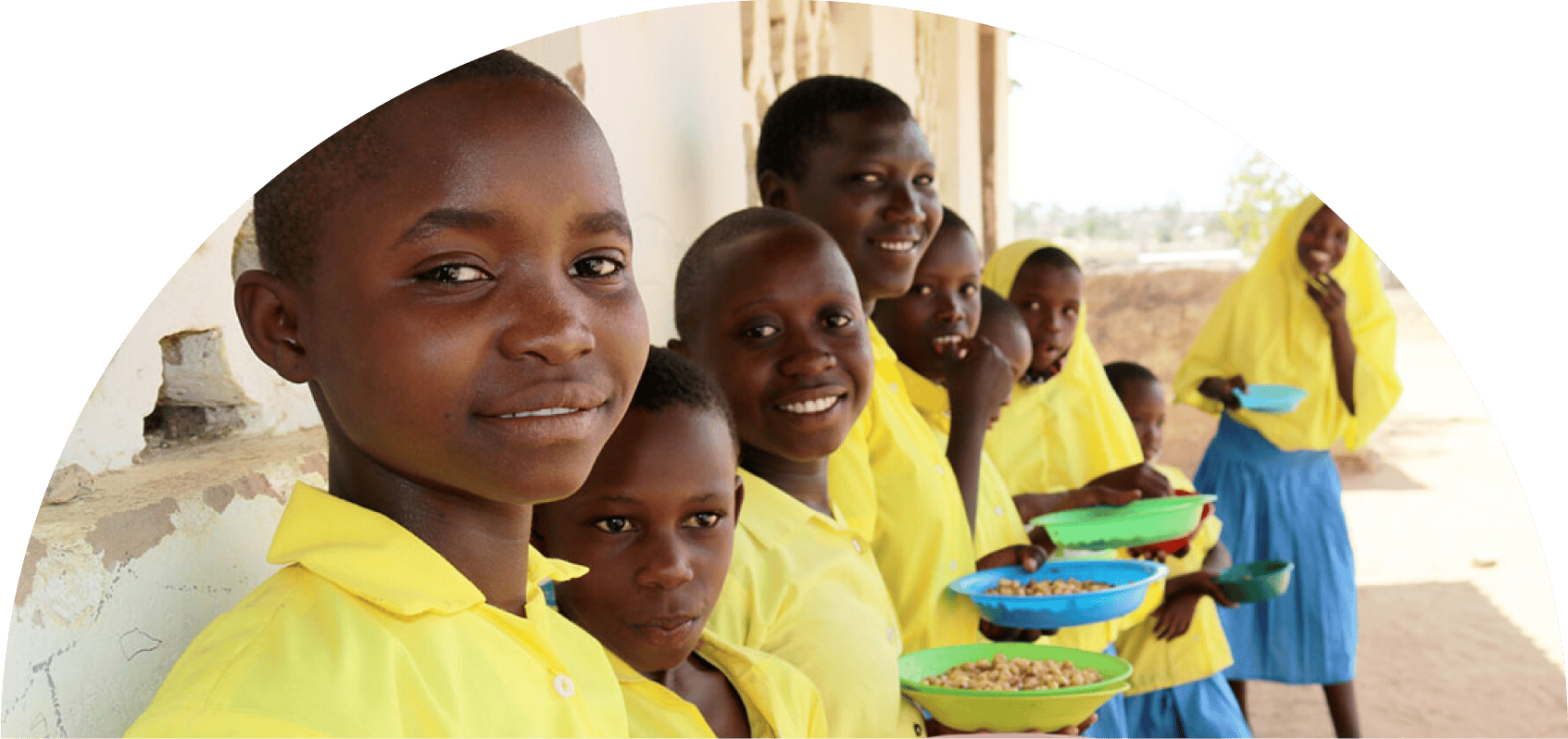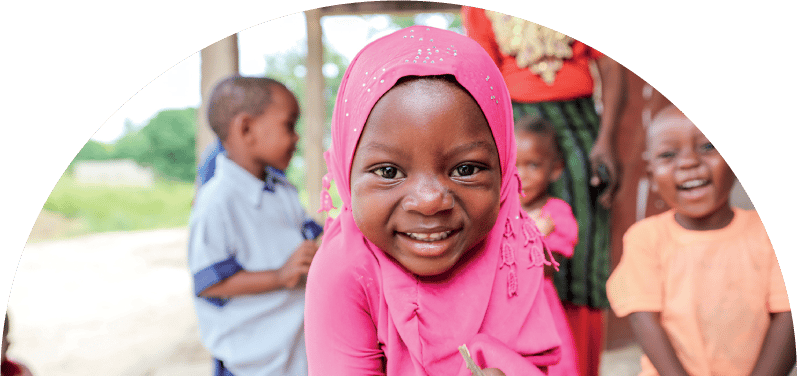Hunger
is a solvable problem
Words by Linda Nguyen | Design by Rose Pereira | Reading time: 10 minutes

Hundreds of millions of people, including children, will go to bed hungry tonight. Take action, fight for social change and help end the global hunger crisis.
The world is hungry
The situation is bad,
but it could get worse
Krishnan, who describes himself as a pragmatic optimist, says the world’s desire to help has not waned, but more needs to be done.
“We see a lot of suffering, but we also see the difference our work can do,” he says.
Krishnan first began working at Plan International on the same day a 7.0 magnitude earthquake struck the nation of Haiti in 2010, eventually killing upwards of 220,000 people. Immediately, he was on a plane on his way to help.
Krishnan says that with so many crises happening at the same time, it’s important to continue forging connections with those in need of help, a value that is important among humanitarian workers.
He believes the biggest currency in the world right now is attention – and that’s why it’s important to continue to show people on the other side of the world that humanity cares and will still help.
Five reasons girls suffer the most when food is scarce.
What is food security?
We break it down.
Read more

There’s a story Dr. Unni Krishnan likes to tell when people ask him how he holds on to hope when the world feels like it’s on fire. His story is about rain.
When he was growing up as a boy in southern India, monsoon rains would come and, more often than not, flood the fields surrounding his home.
When he woke up each morning feeling defeated, his mother always gave him the same sage advice:
“You have two options,” she would say to Krishnan, now Plan International’s global humanitarian director. “You can look through the window and see the dirty, filthy, muddy pond, or you can see the blooming lotus. The choice is yours, which one you choose.”
Choosing to see the beautiful flowers growing out of the mud has been a mantra that has served Krishnan well, as his work takes him to the most impoverished countries around the world.
It’s a mantra that continues to guide him now, as he tries to fight against an unprecedented global hunger crisis.
• Sudan
• South Sudan
• Somalia
• Ethiopia
• Eritrea
• Kenya
• Burkina Faso
• Mali
• Niger
• Haiti
• Guatemala
• Myanmar (Burma)
• Bangladesh
Countries affected by the hunger crisis
According to the World Food Programme, an estimated 828 million people will go to bed hungry tonight. Among them, 90 million people are considered to be in urgent need of food.
Unlike past hunger crises, what makes this situation so desperate is that it isn’t centred in only one region of the world; it is impacting many countries at the same time across Africa, South America and Asia.
Multiple factors, ranging from conflict, climate change and political instability to rising food and fertilizer costs, have compounded the hunger crisis, and the situation is dire – so dire that if all of the people impacted by the global hunger crisis were gathered, it would create the third most populous country (after India and China), says Krishnan.
The World Food Programme says US$23 billion is needed to meet the most urgent humanitarian needs for people living in hunger hotspots and help them pull back from the brink of famine.
Among them are an estimated 30 million children currently suffering from acute malnutrition who are at risk of starvation.
“We are in an unprecedented time with so many crises unfolding all at the same time,” said Krishnan during a recent visit to Canada.
“But hunger is a solvable problem. The world is just not doing enough about it.”
1. A long drought has wreaked havoc on crops and livestock across Africa.
What’s contributing to the global hunger crisis?
2. Unpredictable weather like floods, hurricanes and tornadoes has destroyed homes and displaced millions of people.
3. The COVID-19 pandemic plunged people further into poverty.
4. Soaring fertilizer costs and its lack of availability due to the Ukraine war have disrupted agriculture production and supply chains.
5. Rising inflation has made it too expensive for many to purchase food.
6. Conflict and political instability have forced people to leave their homes and livelihoods.
Research from Plan International Canada shows that in times of crises, girls suffer the most when food is scarce.

Girls are most impacted during
a hunger crisis
Girls are often the last to eat, and if they get to eat, they eat the least.
1/4
They are the first to get pulled out of school and sent to work or to an early marriage.
2/4
Tension, anxiety and stress can build up in a home when a family is hungry; this can lead to violent outbursts, which are often directed at girls and women.
3/4
They are often asked to collect water and firewood, forcing them to walk long distances alone, which puts their safety at risk.
4/4
“Imagine a scenario where there are [hundreds of] millions of people affected and the rest of the world isn’t willing to do anything about it,” he says.
“Those numbers would go through the roof. It is already bad, but it could be much worse if the world wasn’t doing anything about it.”
Amid the suffering,
there is still resilience
On a recent trip to Somalia, Krishnan met a group of mothers who had to make the heartbreaking decision each day about who they were going to feed with the limited food they have available.
“Do you feed your child, or do you feed your livestock? The argument is that if you feed your livestock, your cows, in the long term that will help feed several children,” he says.
“That is one difficult choice to make. Then the second decision is, which child to feed?”
These mothers told him they had been forced out of their communities due to a lack of food and dying livestock. With their children and a few belongings, they walked for kilometres until they found programming by Plan International.
Krishnan says Plan International’s work in these communities involves setting up community kitchens and women’s cooperative programs and providing psychosocial assistance to help deal with the trauma of displacement.
He saw a similar resilience when he met two young sisters from a small Venezuelan town at the border of Colombia a few months ago. These sisters, ages 5 and 12, wake up every day at 4 a.m. to cross into Colombia, where buses transport them to school. Due to conflict, their school in Venezuela is closed.
The girls carry small backpacks with a sandwich and their books. The younger child attends school from 7 a.m. to 1 p.m. before returning to the border checkpoint to wait for her older sister. The older child goes to school from 1 p.m. to 6 p.m. Once classes are done for both, they begin walking back to Venezuela. They get home at 8 p.m., only to sleep and start the routine all over again the next day.
Krishnan sat with the younger girl on the bus, where she offered him half of her sandwich and told him with conviction that she will do whatever it takes to stay in school so she can one day be a veterinarian.
These girls are among the 2,000 children who cross the Venezuela-Colombia border every day so they can go to school.




Chedeline (right), 12, wants to be a nurse when she grows up but has found it hard to study since the hunger crisis hit Haiti. She often goes days without eating, and when she does, she will eat a bit of rice, maize or millet, rarely meat.
As the drought in Somalia enters its sixth failed rainy season, children and their families are in urgent need of assistance. Plan International is working in the area to provide cash assistance to people struggling to survive at this makeshift camp in Burau.
ABOVE: Last year, Plan International started seven gardens at schools in Niger in response to the hunger crisis. Today, these gardens are thriving, and children are learning how to grow their own vegetables and use these skills to start their own gardens at home.
Donate to help fight the
hunger crisis in East Africa
Hunger continues to rage across this region and is made worse by the effects of climate change. Gunfire, explosions and looting are a daily reality for many families. We cannot abandon children who are trapped in or fleeing the conflict and ongoing crises.
Donate now
watch:
BELOW: A recent study found that a quarter of children in the state of Kassala in Sudan are suffering from acute malnutrition due to the hunger crisis. In response, Plan International has deployed mobile nutrition teams to remote communities to screen, distribute therapeutic food and conduct follow-up checks on these children.
Donate
Severe drought has worsened in Ethiopia’s Oromia region, causing widespread water scarcity and food insecurity, killing off livestock and severely disrupting people's livelihoods. Seke, 50, says the drought has caused her to lose everything.

Some tips you
can use to fight compassion fatigue.



Read more
Read more
Read more
watch:
On a recent trip to Somalia, Krishnan met a group of mothers who must make the heartbreaking decision each day about who they are going to feed with the limited food they have available.
“Do you feed your child, or do you feed your livestock? The argument is that if you feed your livestock, your cows, in the long term that will help feed several children,” he says.
“That is one difficult choice to make. Then the second decision is, which child to feed?”
These mothers told him they had been forced out of their communities due to a lack of food and dying livestock. With their children and a few belongings, they walked for kilometres until they found programming by Plan International.
Krishnan says Plan International’s work in these communities involve setting up community kitchens and women’s cooperative programs and providing psychosocial assistance to help deal with the trauma of displacement.
He saw a similar resilience when he met two young sisters from a small Venezuelan town at the border of Colombia a few months ago. These sisters, ages 5 and 12, wake up every day at 4 a.m. to cross into Colombia, where buses transport them to school. Due to conflict, their school in Venezuela is closed.
“What was clear was the determination of these kids,” Krishnan says. “They are not going to give up.”
Meeting these girls reminded Krishan that as Plan International supporters, we all need to hold on to our determined optimism, because we will make a difference.
“When determination and optimism come together, we can change the story,” he says.

